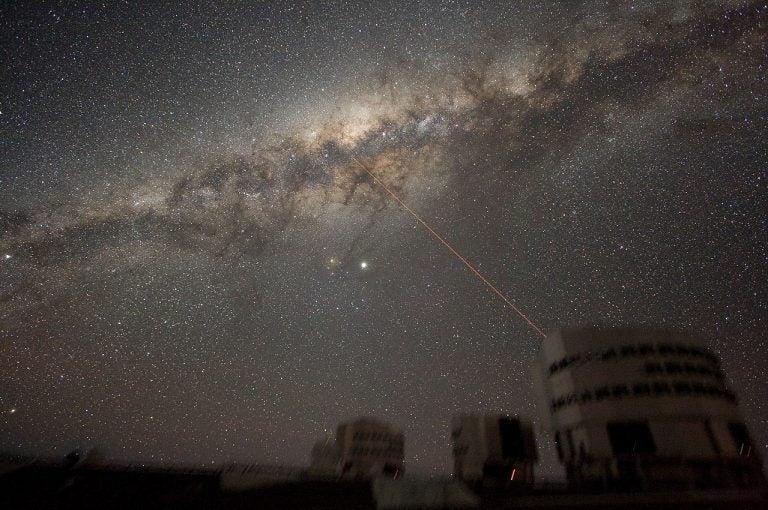Strolling Our Galactic Neighborhood
Listen 06:12
The Milky Way's Galactic Center in the night sky above the Paranal Observatory (the laser creates a guide-star for the telescope). ESO/Y. Beletsky
Our Milky Way is one of some forty galaxies that comprise what is known as our “local group.”
Two of our nearest galactic co-occupants are the Large and Small Magellanic Clouds (visible in the Southern Hemisphere). At a mere 170,000 light years away, they are close enough for astronomers to notice that, contrary to expectation, they are producing stars at an increasing rate, in contrast to our Milky Way where star production has been decreasing for billions of years. It’s thought that the much more massive Milky Way exerts a strong gravitational pull that is the driving force behind the increased star production. Separately, that gravitational tug will ultimately lead to a merger of the three galaxies in some 2.5 billion years. What’s not known is what effect this could have on our sun and its planets. The sun is not expected to begin its evolution toward a red giant stage for another 2.5 billion years after the galaxy merger.
WHYY is your source for fact-based, in-depth journalism and information. As a nonprofit organization, we rely on financial support from readers like you. Please give today.




